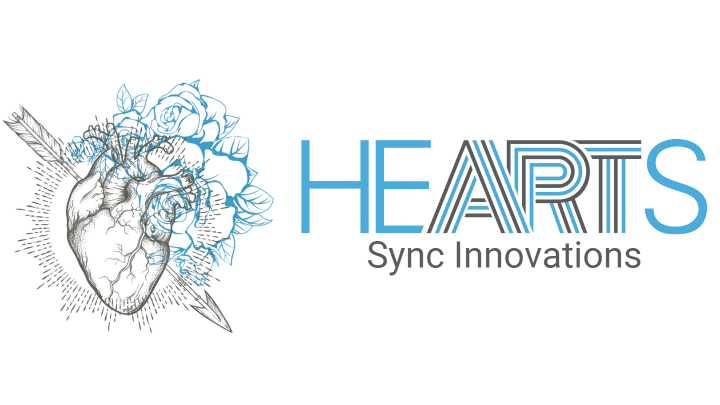“A hug is a short break from being alone” – this is a saying from various cultures where touch is considered a daily health routine. Modern high performers often overlook this: they optimize sleep, training, and nutrition – and miss the simplest regulator of their nervous system. Touch is not a luxury. It is biology at quick access, measurable in hormone levels and palpable in heart rate.
Emotional stress activates the HPA axisstress regulation system consisting of hypothalamus, pituitary gland, adrenal cortex, increases adrenaline and cortisol, and raises heart rate and blood pressure. Prolonged exposure leads to autonomic imbalanceexcess of sympathetic activity with insufficient parasympathetic activity, which hinders recovery and regeneration. Touch – especially warm, attentive hugs – stimulates the release of oxytocinbonding and anti-stress hormone that signals social safety, dampens the stress response, and enhances parasympathetic activity. It is not romance that matters, but the feeling of safety and connection. Self-touch can activate similar pathways when social closeness is not available. Thus, touch transitions from “nice to have” to a quick intervention for heart, mind, and performance.
Chronic social withdrawal is regarded as a strong stressor and increases the risk of death similarly to smoking or alcohol consumption – more significantly than physical inactivity or obesity, as epidemiological analyses show [1]. Mechanistically, one finds an activation of the HPA axis, higher sympathetic nerve activity, diminished parasympathetic function, and a pro-inflammatory immune state – all factors that drive blood pressure, vascular tone, and atherogenesis [1]. Oxidative stress, which is driven by NADPH oxidases in brain areas responsible for stress regulation, acts as molecular “noise” that overloads the cardiovascular system [1]. On the other hand, tender touch in everyday life correlates with higher endogenous oxytocin, less subjective stress, lower anxiety, and – over days – lower cortisol levels [2]. For the heart, this means: less pressure, better autonomic balance, and ultimately lower vascular load. For high performers, this translates to improved focus and quicker recovery after mental peaks.
In a practical investigation during the pandemic, 247 individuals were asked daily about touch and mental state while providing saliva samples. Affective touch was associated within the same person with higher oxytocin and less experienced stress and anxiety; between individuals, those with more touch showed lower cortisol levels and greater happiness [2]. These results link experienced closeness with measurable hormone physiology and psychological well-being – relevant for anyone who needs to perform stably under high pressure. Complementary to this, animal and human findings show that social isolation upregulates the stress systems: HPA axis on, sympathetic activity up, parasympathetic down, pro-inflammatory patterns – with cardiovascular consequences ranging from hypertension to atherosclerosis; oxidative stress acts as a central driver of this cascade [1]. Particularly noteworthy is that not just social, but also targeted self-touch can elevate oxytocin levels: in an experimental study, peripheral oxytocin concentrations increased following both natural, dynamic self-touch and social touch; women in the luteal phase showed higher levels than in the follicular phase [3]. This opens up a practical option when social closeness is unavailable – without biochemical detours, directly applicable in everyday life.
- Implement a daily 20-second conscious hug: chest-to-chest, breathe calmly, let your shoulders drop. Aim: activate feelings of safety, increase oxytocin, dampen stress [2].
- If no one is available: use self-touch. Place one hand on your sternum and one on your abdomen, apply gentle pressure for 60–90 seconds while breathing slowly. Studies show that natural, dynamic self-touch measurably increases oxytocin [3].
- Micro-touch in the workplace: handshake with a brief warmth, shoulder or forearm contact in appropriate contexts; short, respectful, mindful. Small doses accumulate and correlate with reduced momentary stress [2].
- Actively manage social isolation: plan daily social micro-doses – a walk with a colleague, coffee break with a partner, a brief evening cuddle ritual. Aim: prevent the HPA axis from running in a continuous mode and reduce cardiovascular load [1].
- Link recovery: after intense meetings or workouts, engage in 2 minutes of quiet hugging or self-touch plus slow nasal breathing. This consolidates parasympathetic activation with touch-induced oxytocin for faster regeneration [3] [2].
Touch is the fastest shortcut from stress mode toward heart protection and clarity. Start today with 20 seconds of conscious hugging – or with mindful self-touch if no one is around. Small, daily doses build resilience and strengthen your heart for high performance.
This health article was created with AI support and is intended to help people access current scientific health knowledge. It contributes to the democratization of science – however, it does not replace professional medical advice and may present individual details in a simplified or slightly inaccurate manner due to AI-generated content. HEARTPORT and its affiliates assume no liability for the accuracy, completeness, or applicability of the information provided.












